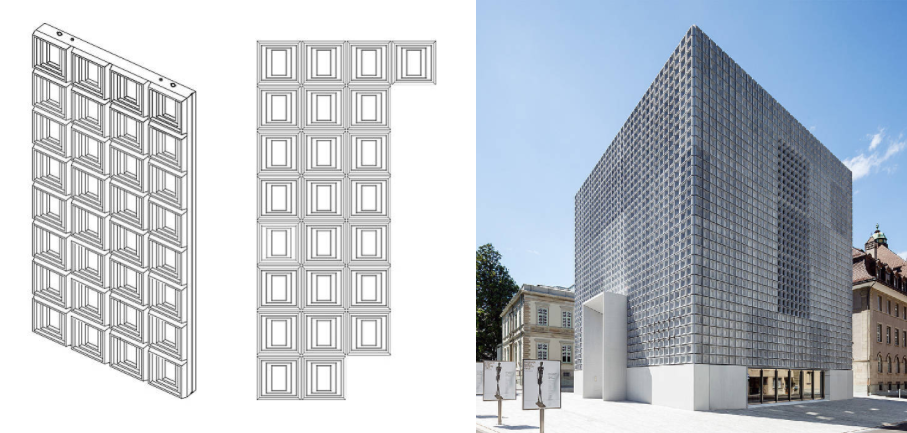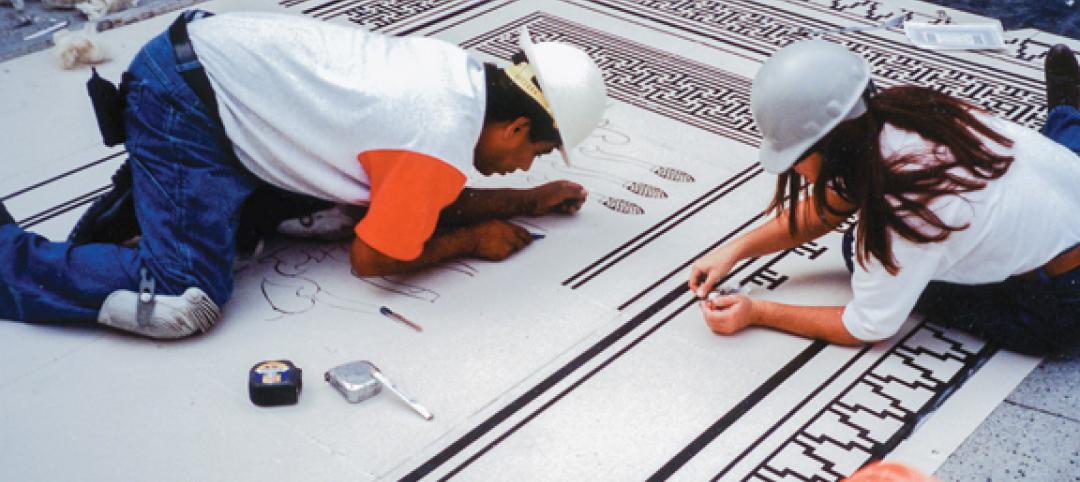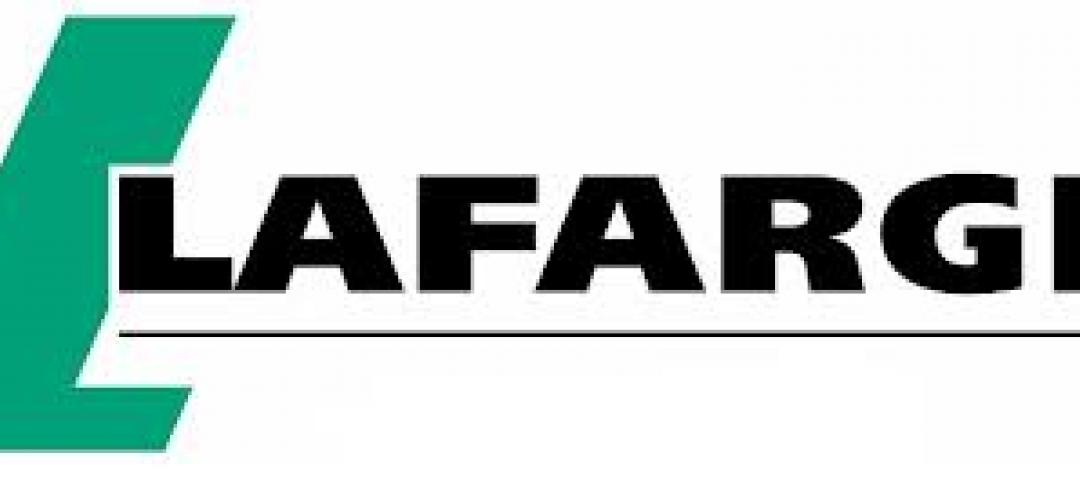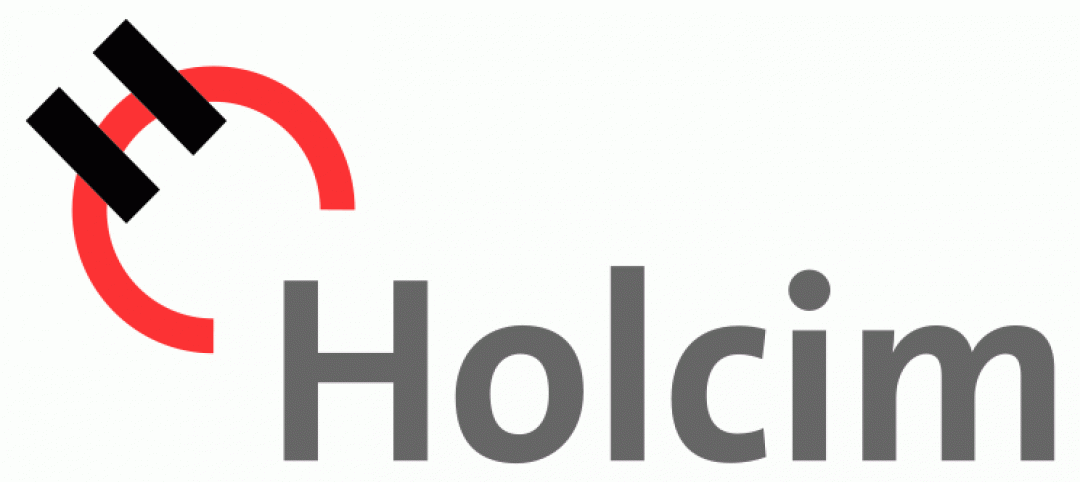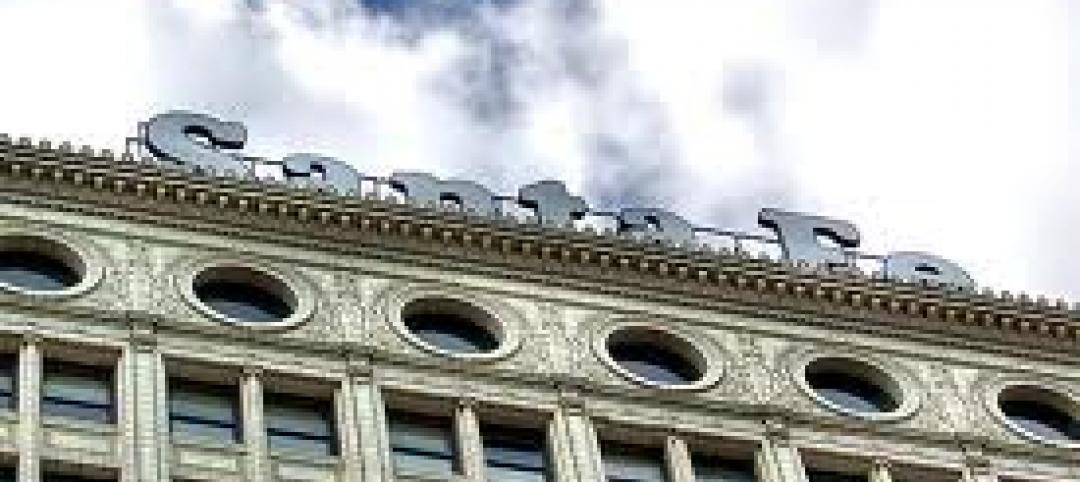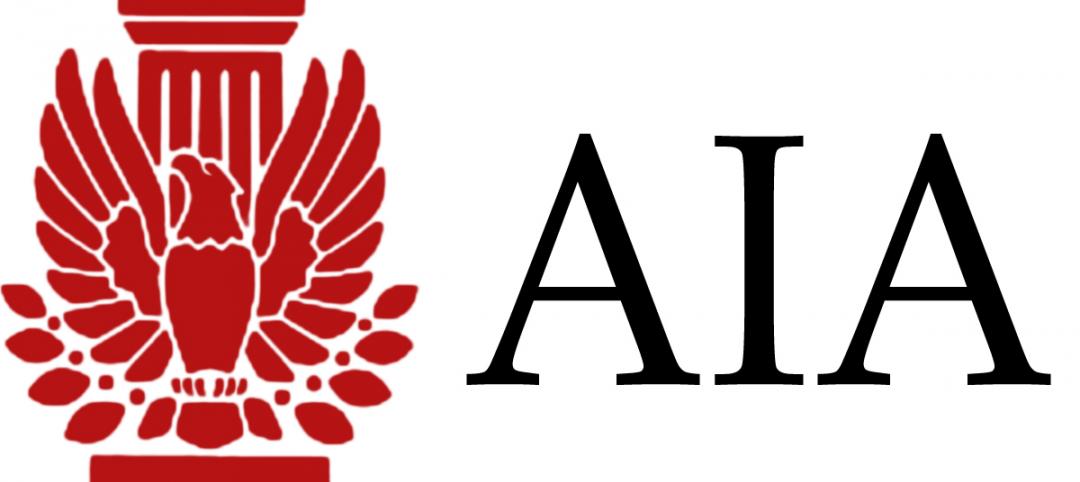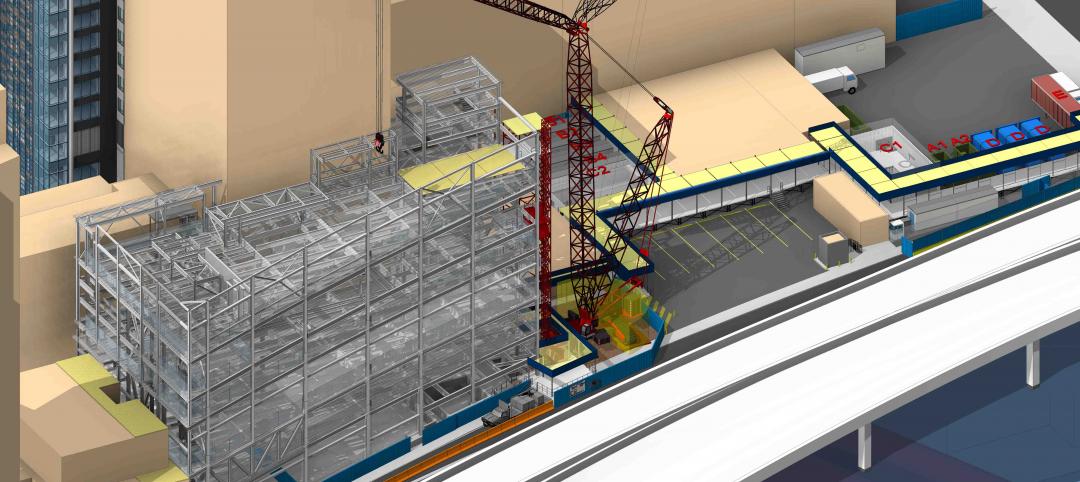If you think you've seen it all when it comes to concrete construction, then you haven't sat down with Blaine Brownell.
The architect-turned-blogger-turned-author has become the industry's foremost expert in everything that is unconventional and provocative in the building products field. For the past eight years, this LEED Accredited Professional, BD+C “40 Under 40” winner, and visiting professor at the University of Michigan's Taubman College of Architecture and Urban Planning has made it a priority to track down the newest building products from around the world and report on them in a weekly online newsletter and in two books: Transmaterial (2006) and the newly released Transmaterial 2 (2008), both from Princeton Architectural Press.
I had a chance to pull up a chair and chat with Brownell about some of the most innovative concrete technologies he's come across recently. Here are eight products that are sure to rock your next concrete project:
Translucent fabric creates see-through concrete
Translucent concrete is not exactly new, but HeidelbergCement's approach to transmitting light through concrete is an industry first. Instead of using acrylic rods or optical fibers, Luccon features translucent fabric that is cast layer by layer into fine-grained concrete, allowing light, shadows, and even colors to project through the concrete with negligible degradation. Because the fabric fibers are small in diameter and the proportion of fabric to concrete is relatively low, Luccon delivers the same strength and durability as conventional concrete.
Contents: Concrete, translucent fabric
Applications: Exterior or interior light-transmitting walls, shading devices, illuminated paving, light fixtures, signage
Manufacturer: HeidelbergCement AG
www.heidelbergcement.com
ALSO SEE: 5 things you should know about decorative concrete
Custom concrete patterned surfaces
A Finnish company has developed a patented method for creating patterned concrete surfaces that involves the precise application of a surface retarder to the exterior of a concrete formliner. The surface pattern is the result of the contrast between the smooth face and the exposed fine aggregate in the concrete. This approach allows precast concrete manufacturers to produce highly detailed concrete elements, panels, and slabs with a variety of select patterns, as well as virtually any custom design.
Contents: Concrete, surface-retarder membrane
Applications: Concrete façades, architectural panels, partitions, garden walls, slabs
Manufacturer: Graphic Concrete Ltd.
www.graphicconcrete.com
Lightweight concrete
Architectural cladding panels made with CarbonCast carbon-fiber grid reinforcing can weigh up to 66% less than convention precast panels. That's because carbon-fiber reinforcing resists corrosion and therefore requires less concrete cover. These thinner, lighter concrete panels can also be integrated with insulation, increasing the R-value of wall systems. When used in the flanges of pre-topped double tees, CarbonCast can reduce weight by 15% and eliminate the need for sealers and sacrificial barrier coatings.
Contents: Precast concrete, carbon fiber
Applications: Load-bearing and non-load-bearing exterior walls, slabs
Manufacturer: Altus Precast
www.altusprecast.com
Turn up the heat and this concrete will tell you the time
A trio of UK-based product designers has developed a method for incorporating dynamic patterns, numbers, and text into concrete surfaces. Chris Glaister, Afshin Mehin, and Tomas Rosén have figured out that by incorporating thermochromatic pigment and wire heating technology into a standard concrete mix, the color of concrete can be changed. With the use of microprocessor control devices, the color-changing pattern can be precisely manipulated to form complex patterns and even information displays, such as dot-matrix clocks. While Chronos Chromos Concrete is not yet commercially available, the material is being used in several projects, including a 40x78-inch information display in the entrance hall of a new building in London.
Contents: Cement, limestone aggregate, thermochromatic pigment, glass fiber
Applications: Large-scale architectural installations, sealed structural information displays such as clocks and dot-matrix displays
Manufacturer: Chromastone UK
www.chromastone.com
Concrete bends, but won't break
Scientists at the University of Michigan have developed a new type of fiber-reinforced “bendable” concrete that looks like regular concrete but is 500 times more resistant to cracking and 40% lighter in weight. The secret is in the composition, which incorporates silica sand just 100 microns in diameter and tiny polyvinyl alcohol fibers covered with a slick coating. When overloaded, the lubricated fibers begin to slip instead of fracturing. The result is a concrete that bends but will not break. Ideal for structures in high seismic regions, Engineered Cement Composites has been applied in several bridge projects, as well as in two high-rise buildings in Tokyo—Roppongi Pacific Tower and Nabeaure Yokohama Tower.
Contents: Cement, silica sand, polyvinyl alcohol fibers
Applications: Structural members for bridges and buildings, especially those located in high seismic regions
Manufacturer: University of Michigan, College of Engineering, Victor C. Li, PhD
http://www.umich.edu/~acemrl/
Add texture to exposed concrete surfaces in a snap
While fabrication of textured exposed concrete surfaces using elastic formliners has been practiced worldwide for more than 35 years, Reckli Formliners offers a significant improvement to the traditional approach. Made from elastic polyurethane, the formliners allow the release of the formliner from precast or cast-in-place concrete without damage to either the concrete surface or the formliner itself. Each formliner is good for between 50 and 100 reuses, making large-scale decorative concrete installations a snap.
Contents: Polyurethane elastomers
Applications: Precast and cast-in-place concrete
Manufacturer: Reckli-Chemiewerkstoff GmbH
www.reckli.de
The world's heaviest wallpaper
At first glance, walls constructed with Walled Paper precast concrete may appear to be covered with decorative paper, but the complex, ornate patterns are actually cast into the surface of the concrete panel. UK-based Concrete Blond can cast more than 50 standard patterns and virtually any custom design into architectural precast panels for interior and exterior cladding, flooring, and surface applications. The patterns can be cast with a textural depth of 1/64 to 3/16 inch on to three types of concrete: Brutalist gray, Victoriana black, and Portland white.
Contents: Concrete
Applications: Wall cladding, flooring, surfaces
Manufacturer: Concrete Blond
www.concrete-blond.com
Don't forget to water your concrete
Developed by Dutch designers Frederik Molenschot and Susanne Happle, Solid Poetry is a concrete tile that reveals a pattern when wet. The detailed patterns are created by carefully applying surface treatment to the finished concrete surface that darkens when exposed to water or humid air. Solid Poetry is ideal for floors, walls, and surfaces in environments that encounter frequent humidity changes, such as poolsides, gardens, bathrooms, and saunas.
Contents: Concrete, surface treatment
Applications: Floors, walls, and surfaces in humid/wet environments
Manufacturer: Studio Frederik Molenschot and Susanne Happle
www.frederikmolenschot.nl
For more products, visit http://transstudio.com.
Related Stories
| Jan 3, 2013
5 things you should know about decorative concrete
Designing and installing decorative concrete is a lot more difficult that you might think. A veteran of many such installations offers a handful of tips to help you plan your next decorative concrete project.
| Sep 24, 2012
Reed Construction completes Lafarge headquarters in Chicago
Reed Construction was contracted to complete the full third floor build-out which included the construction of new open area work space, private offices, four conference rooms with videoconferencing capabilities and an executive conference boardroom.
| Aug 30, 2012
Holcim (US) announces new Deputy Chief Executive Officer
Ruiz began his career with the Holcim Group in 1986 as electrical supervisor with Holcim Apasco, Mexico, later becoming plant manager.
| Jun 6, 2012
SOM urges Chicago tenants to partner with landlords to cut energy use
Tenants can exceed building energy challenge targets recently announced by Mayor Emanuel.
| Jun 1, 2012
New BD+C University Course on Insulated Metal Panels available
By completing this course, you earn 1.0 HSW/SD AIA Learning Units.
| Jun 1, 2012
AIA 2030 Commitment Program reports new results
The full report contains participating firm demographics, energy reduction initiatives undertaken by firms, anecdotal accounts, and lessons learned.
| Jun 1, 2012
New York City Department of Buildings approves 3D BIM site safety plans
3D BIM site safety plans enable building inspectors to take virtual tours of construction projects and review them in real-time on site.
| May 30, 2012
Construction milestone reached for $1B expansion of San Diego International Airport
Components of the $9-million structural concrete construction phase included a 700-foot-long, below-grade baggage-handling tunnel; metal decks covered in poured-in-place concrete; slab-on-grade for the new terminal; and 10 exterior architectural columns––each 56-feet tall and erected at a 14-degree angle.
| May 29, 2012
Reconstruction Awards Entry Information
Download a PDF of the Entry Information at the bottom of this page.


